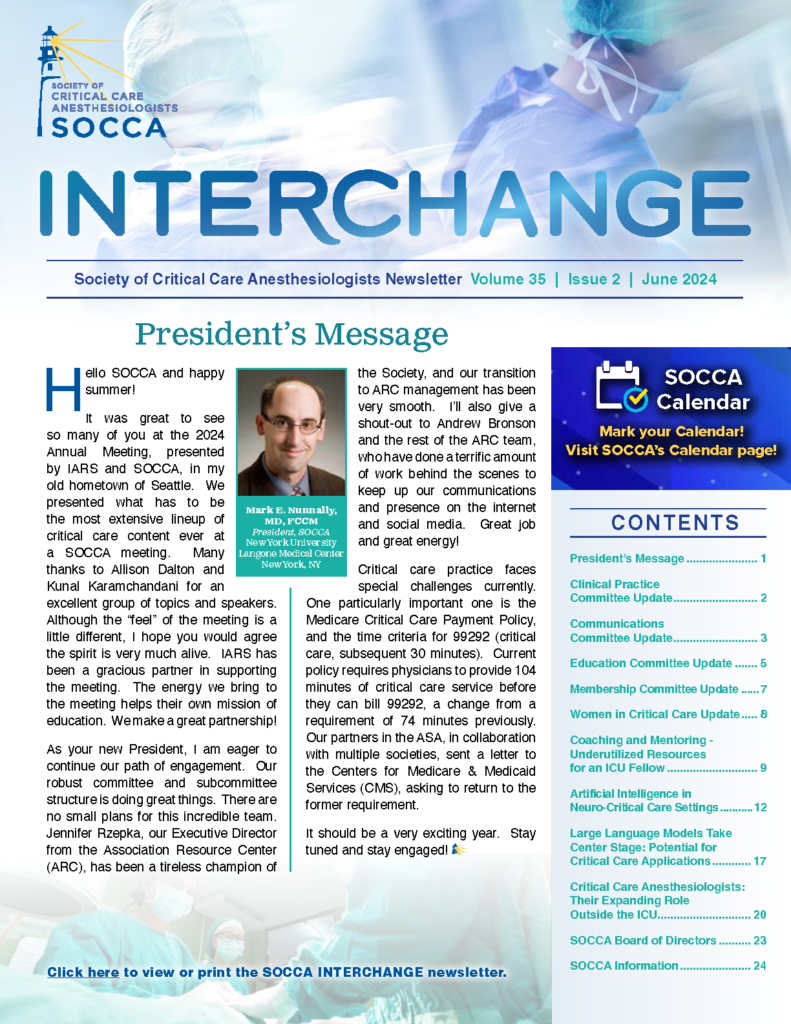An Important Step: Improving Gender Diversity in Leadership
In the last 50 years, the number of women graduating as physicians has increased; these trends have been noted in the United States, Europe, and as well as low-middle-income countries1. Emerging demographic trends in Critical Care Fellow recruitment from 2004-2017 highlighted the significant increase in female fellows from 29.5% in 2004 to 38.3% in 2014, (p < 0.001)2. Although the number of women graduating as physicians is increasing, those taking up critical care medicine and rising within organizations as leaders are painfully low.
The Women in Intensive Care Study published in 2018 was a survey of 84 critical care societies and showed that female representation on various CCM boards and councils ranged from 8 to 50%, depending on the geographic region; the highest representation was in the Society of Critical Care Medicine (SCCM) and was interprofessional. SCCM also had the highest proportion of female presidents between 2000-2017, whereas the European Society of Intensive Care Medicine (ESICM) had none. Similar results were seen in a survey of Pulmonary Critical Care Medicine leadership at academic centers, where a 2018 survey showed 29% of PCCM Program directors, 15% of PCCM Division Chiefs, and 15% of department of medicine chairs were women.3 In pediatric critical care medicine, more women led fellowship programs, but less had representation in editorial leadership4, highlighting that this is a challenge for multiple sub-specialties and medicine as a profession.
Marian Wright Edelman rightfully said, “You can’t be what you can’t see,” and it is imperative that women have role models that we can be inspired by and emulate. The unconscious bias against women in leadership roles—“women aren’t natural leaders”—can be addressed by increasing the recruitment and visibility of women in executive roles.
Women In Critical Care (WICC) is committed to highlighting the impact of the gender gap and promoting efforts to reduce the gender gap in CCM leadership roles. I took the opportunity of asking Drs. Brian Bateman and Martin Angst, respectively Chair and Vice Chair at the Stanford University Department of Anesthesiology and Critical Care, why promoting gender diversity is important to their department and organization:
“At Stanford, our department is committed to the inclusion of women in leadership roles. We recognize that our department thrives when its leadership mirrors the diversity of our faculty and trainees, encompassing aspects such as gender, race/ethnicity, and background. This diversity enriches our leadership team’s decision-making process, as it grants us insight into the unique challenges that certain groups may face.
Furthermore, it is important as it provides our junior faculty with role models and mentors who share similar life experiences and backgrounds. It is the combined skill set of a diverse leadership team that will propel our department’s vision to be a global leader in academic anesthesiology, improve patients' experiences and outcomes, and transform healthcare through collaboration, discovery, and innovation.
Recently, we have made significant progress in diversifying our leadership team. Women have assumed various senior leadership positions, including several Vice Chairs and Division Chiefs. Nonetheless, our journey is ongoing. As we work to fill open leadership positions, we will conscientiously search for accomplished women leaders to assume these roles. Equally crucial, we will continue in our efforts to nurture and cultivate our female trainees and faculty, equipping them for future leadership roles that carry influence and impact.”

Brian Bateman, MD, MSc
Chair, Stanford University Department of Anesthesiology and Critical Care
Stanford, California

Martin Angst, MD
Vice Chair, Stanford University Department of Anesthesiology and Critical Care
Stanford, California
References:
- Venkatesh, B., Mehta, S., Angus, D.C. et al.Women in Intensive Care study: a preliminary assessment of international data on female representation in the ICU physician workforce, leadership and academic positions. Crit Care 22, 211 (2018).
- Lane-Fall MB, Miano TA, Aysola J, Augoustides JGT. Diversity in the Emerging Critical Care Workforce: Analysis of Demographic Trends in Critical Care Fellows From 2004 to 2014. Crit Care Med. 2017;45(5):822-827.
- Olson, Emily M., Cassie C. Kennedy, and Diana J. Kelm. "Assessment of gender parity: leadership representation in pulmonary and critical care medicine." Journal of Women's Health 31.3 (2022): 439-446.
- Maxwell, Andrea R. MD, MPH1; Riley, Carley L. MD, MPP, MHS1,2; Stalets, Erika L. MD, MS1,2; Wheeler, Derek S. MD, MMM, MBA1,2; Dewan, Maya MD, MPH1,2. State of the Unit: Physician Gender Diversity in Pediatric Critical Care Medicine Leadership. Pediatric Critical Care Medicine 20(7):p e362-e365, July 2019.





































